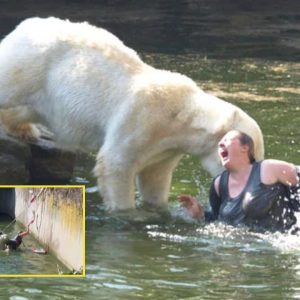
The 16-year-old Brayden Blake captured the white humpback swimming 500 meters off the shore of Fingal Head, which is close to Coolangatta. Known to travel north along the east coast at this time of year, Australia’s famous whale Migaloo—named from an indigenous phrase for ‘white fella’—is a phenomenon.

Scientists are thrilled about the sighting and believe the whale may be the progeny of the well-known humpback whale, who hasn’t been spotted yet this season.
Marine expert Dr Wally Franklin told Nine it could be an ‘incredibly rare’ second albino whale in the eastern Australian whale group.
‘This is the first time that I’ve been able to say that the white whale I’m looking at could be a white whale other than Migaloo.’

Since it’s still early in the season, the time of the observation is consistent with it being a younger whale, according to Dr. Franklin, who also recognizes the beloved animal by the knobs on his dorsal fin.
Migaloo himself is tipped to show up in late June or early July, if this is in fact a different whale or the treasured cetacean’s offspring.
‘He’s been very consistent with those initial sightings so that could be a good indication that this might be a second white whale, which in itself would be quite incredible,’ Dr Franklin added.

When he rushed home to get his drone and then capture the footage he was astonished by the humpback’s colour.
‘I’ve seen regular humpback whales before, but this one didn’t look at all the same. Every time it came back for a breath of air, it was white,’ he said.

Each year between May and November the humpback whale population makes its annual pilgrimage from Antarctica to the warmer waters off north east Australia. After mating and giving birth, they head back south with their young.

Migaloo is one of the estimated 40,000 whales, but because of his unique coloring, he is valued especially highly.
Migaloo was first observed in the Hervey Bay area in 1991, and since then, scientists have been tracking the animal.

Migaloo’s coloring captivated researchers since it was thought that he was the first entirely white whale in the eastern humpback whale population.
He was named ‘Migaloo’ which means ‘whitefella’ in several indigenous languages.
Whether he is an albino whale or leucistic—that is, incapable of producing pigment yet possessing colored eyes—is still up for debate among scientists.





